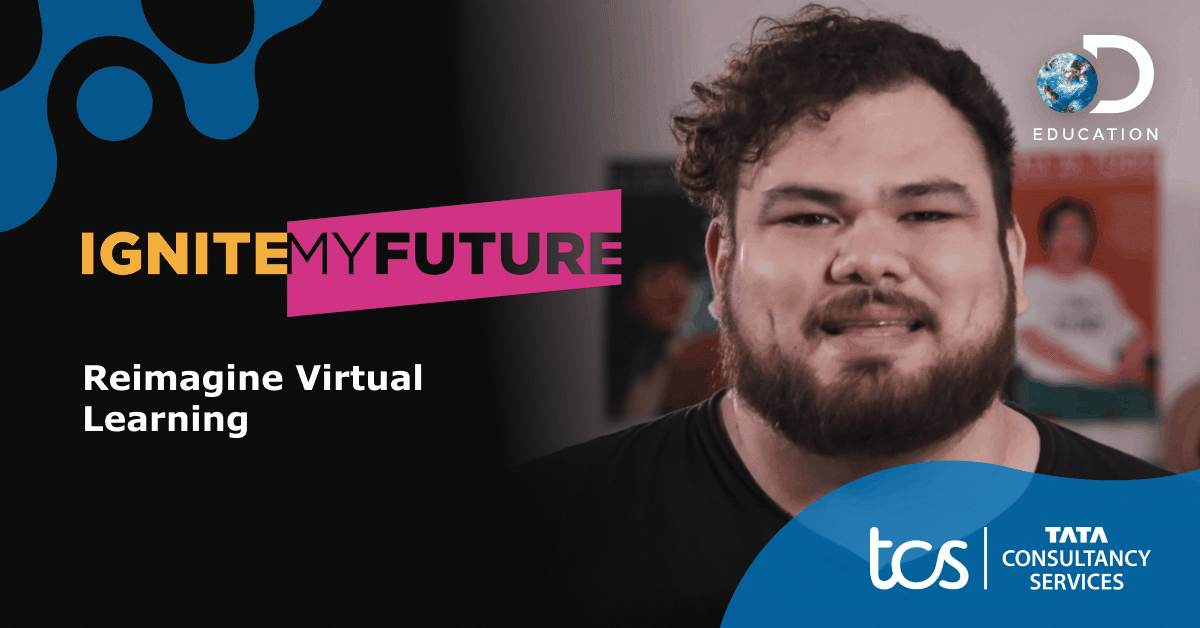Skills Gap Widens During COVID. Computational Thinking Could Help.
By Diego Vela 7th–8th grade classroom teacher & STEM Lab Manager, Colegio Inglés Americano, A.C., Monterrey, Nuevo Leon, Mexico

Technology has enabled our world to become increasingly connected – a trend that should be reflected in our teaching methods. To incorporate global collaboration in class, I have students lean on computational thinking skills to analyze information, work with one another and solve problems.
Computational thinking combines 21st century technology with key strategies to solve challenges and is incredibly relevant for helping students navigate today’s interconnected world. It empowers all students to solve community and global problems by giving them the skills to do so.
Ignite My Future in School, an initiative from Tata Consultancy Services (TCS) and Discovery Education, provides no-cost resources to help teachers introduce computational thinking skills into the classroom.
Here’s how I use computational thinking to encourage virtual, global collaboration in during class.
What is global collaboration?
ISTE provides a framework that outlines what it means to be a global collaborator:
-
Students use digital tools to connect with learners from a variety of backgrounds and cultures, engaging with them in ways that broaden mutual understanding and learning.
-
Students use collaborative technologies to work with others, including peers, experts or community members, to examine issues and problems from multiple viewpoints.
-
Students contribute constructively to project teams, assuming various roles and responsibilities to work effectively toward a common goal.
-
Students explore local and global issues and use collaborative technologies to work with others to investigate solutions.
Emphasizing global collaboration in class provides the extra context students need to make connections, evaluate issues and solve problems in their own (and other) communities.
The benefit of connecting virtually
Teaching virtually has provided additional opportunities to get creative and find new ways to connect my students with peers from around the world. It’s important for learners to understand that they’re not only a part of their country, but a part of the bigger picture.
Virtual environments challenge students to develop stronger communication skills and work together creatively. When students are able to interact with those from different backgrounds and cultures, they’re typically more engaged and are truly excited to learn.
Gone are the days of traditional classroom lectures where a student’s only job is to sit quietly and listen. In today’s world, teachers understand the important role that student engagement plays in the learning process, and how it can add additional value by incorporating global collaboration into existing lessons.
Pairing computational thinking with global collaboration
To make the most of lessons that include global collaboration, I have students use computational thinking skills to solve real world problems. There are seven components to computational thinking:
-
Collect Data: Determine sources from which you will collect data and decide which qualitative and quantitative data to collect.
-
Analyze Data: Produce and evaluate charts, and use appropriate statistical methods to test a hypothesis.
-
Find Patterns: Identify patterns to make predictions, create rules and solve other problems.
-
Decompose Problems: Take large, complicated problems, and break them down into manageable pieces.
-
Abstract: Identify similarities and remove details to create a solution that works for many different problems.
-
Build Models: Test, tweak and refine an object before building it in real life using design software to predict outcomes.
-
Develop Algorithms: Create solutions using step-by-step instructions that operate like a road map for performing a task.
These computational thinking components help make the process of solving a problem more concrete and are an excellent guide for students’ thinking.
I use activities from Ignite My Future that are centered on improving the world. I invite students to work with classmates and students from other parts of the world to solve real-world problems, such as affecting local change through community activism, or planning infrastructure that’s environmentally friendly.
Tip: Find additional global collaboration activities and resources through the Teachers’ Guide to Global Collaboration.
Pairing computational thinking with global collaboration helps students analyze problems through multiple contexts and varied perspectives to find the best possible solution. In the end, it’s less about earning a grade or reaching a defined objective, and more about providing multiple opportunities for students to practice skills and work together until they achieve subject mastery.
A common goal
As educators, we are preparing students to succeed in the real world – and essentially training them for jobs that don’t exist yet. The very least we can do is ensure they have the knowledge and ability to meet new challenges head on, and use a global mindset to find salient solutions.
We all speak the same language: education. That’s what brings us together, and that’s what is going to make all the difference.

